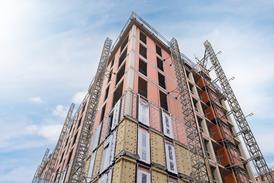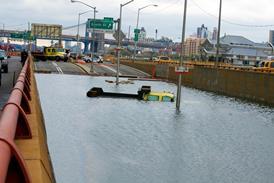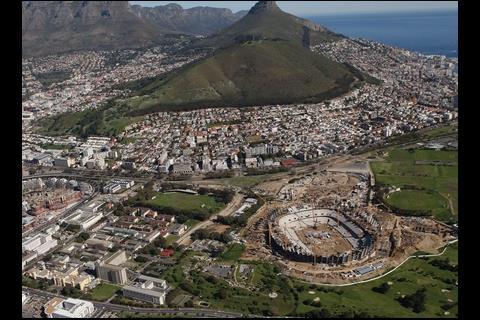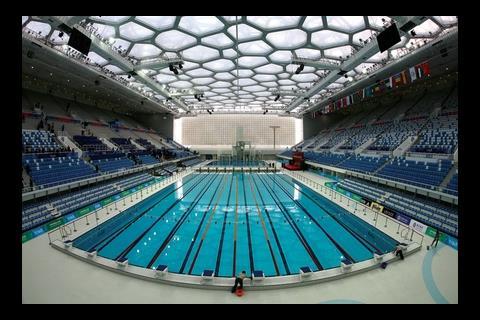In the old days, before the world banking meltdown, firms looked abroad for expansion opportunities. These days they are economic migrants. Davis Langdon looks at the best places to flee
01 / overview of the global economy
Last year was one of the most challenging for a generation and the likelihood is that this year is going to be worse. With the fall out from the financial crisis resulting in the failure or near-failure of some high-profile banking institutions, and with property prices falling more steeply than at any time in living memory, 2008 has been a roller-coaster ride.
The aftershocks of the financial crisis of 2008 are likely to extend well into this year and beyond. After a number of years of boom conditions, in which the world’s GDP rose by 4-5% annually, the outlook for 2008 is that global growth will slow to just 2.5%.
The global economy is expected to grow by just 1% in 2009, the slowest growth rate for several years. The big industrialised countries will expand by 0.3%, and developing regions are expected to grow by 6%, 1% lower than last year.
Many of the world’s largest economies are now officially in recession, and the prospect of a recovery of some description is not likely for a number of years. However, the news is not all bad, as developing economies are expected to take up some of the slack, although at reduced growth rates. Particular bright spots will include Brazil, Russia, India and China. Of all global economies, China is expected to remain the most robust through 2009, with GDP growth approaching 8% as domestic policies begin to bear fruit.
Furthermore, adding to the economic turmoil there’s also likely to be some political upheaval in 2009 with elections in a number of countries. Voters in India, Germany, Indonesia, South Africa and the European Union will all be visiting the polls in 2009.
What does all this mean for the construction industry on a global scale?
02 / construction market overview
The financial crisis that has gripped much of the world, particularly North America and western Europe, is already having an effect on construction spending through a lack of business confidence and tight credit conditions.
Overall, world construction spending growth will have slowed to less than 1% last year to reach $4.8 trillion (£3.4 trillion). This will be the lowest rate of growth since 2002, and a marked slowdown from the intervening years when spending grew by between 3% and 6%.
Despite its problems the US remains the largest national market. China is in third spot, but we expect it to overtake Japan later this year.
There were some large regional differences throughout the year. Construction spending in the North American market showed the biggest contraction; it was down 9%, thanks to the downturn in the USA. Western Europe fared a little better: it has no growth at all. Construction spending in France and Germany is expected to avoid recession, but downturns are likely in the UK, Spain and Italy. Growth in eastern Europe is slowing but is expected to stay positive, although there are likely to be big differences between northern and southern countries.
Asia is likely to see a pronounced slowdown as its exports markets contract. However, construction spending is still expected to grow, with India faring better than China owing to its lower dependence on exports.
Our review of world construction in 2008 and outlook for this year concentrates on the five main trading blocks, namely Africa, the Americas, Asia Pacific, Australasia, and Europe and the Middle East.
03 / europe
After a buoyant six years, construction spending in Europe is likely to fall in 2009. In western Europe, Ireland, Italy, Spain and the UK will have a tough year. In eastern Europe, growth is expected to accelerate next year.
At a sectoral level, residential construction is likely to be the worst performer, particularly in the UK, Ireland and Spain. Infrastructure construction, however, remains generally buoyant across the continent.
On average, the countries of western Europe spend half their construction outlay on residential buildings. Eastern Europe countries, by contrast, spend 26% of their money on housing. This means that western countries are more affected by housing market corrections, especially in the UK, Spain, France, Ireland, Belgium, Sweden and the Netherlands.
The UK has led construction spending growth in Europe for several years. However, as falling house prices, weak income growth and high debt levels undermine consumer spending, the UK economy is contracting sharply. House prices in the UK are expected to fall 15% in 2008 and a further 15% in 2009. In addition, businesses are cutting investment in response to tight credit conditions, softening demand and declining profitability. Consequently, construction spending is expected to have contracted by 3% in 2008 with a similar reduction forecast for 2009. The construction market is not expected to return to positive territory until at least 2010 and then by only 1%.
Germany, the largest single market in Europe, is precariously balanced, but it is expected to avoid recession. As a result, construction spending is likely to remain positive through 2009 at levels similar to the 1.5% recorded in 2008.
France and Spain share the UK’s exposure to housing market corrections and both are expected to see declining levels of construction spending in 2009. Of the two, France is likely to perform better: a contraction of 1% is expected and an extended downturn is unlikely.
Spain is facing the possibility of a protracted recession and the industry may shrink by as much as 5%. Residential construction is expected to bear the brunt of any slowdown, however this is likely to feed through to non-residential and infrastructure work by 2010.
However, perhaps the worst performer in Europe is Ireland where construction spending declined 20% in 2008 and is expected to fall by a similar level in 2009. By and large the downturn is the result of significant falls in residential investment that are feeding through to the other sectors.
Overall, in western Europe the outlook is for reduced construction spending through to at least 2010. However, there is some positive news in the east where increasing levels of construction spending are likely. One of the main drivers of growth is infrastructure construction, which has been given a massive boost by many of the region’s countries joining the EU in recent years.
In central and eastern Europe, construction spending is forecast to grow by almost 10% in 2009, up from 9.2% in 2008. Poland is the largest market and represents almost half of eastern Europe’s construction spending. Poland also exhibited the fastest growth rates; it was 14% in 2008 and similar rates are expected this year. The second largest market is the Czech Republic where a more sedate 5% growth is likely this year. Expansion in Hungary (5%) and Slovakia (3%) is expected to moderate from levels seen in the recent past.
In Russia, a seven year programme worth $570bn (£400bn) to upgrade and expand the country’s transportation infrastructure has recently been announced. The programme will include roads, railways, ports and airports. This is the largest infrastructure programme Russia has seen since the collapse of the Soviet Union.
At a sectoral level, Europe’s non-residential sector is the fastest growing and the residential market is the largest. However, in western Europe the residential sector has declined dramatically and there is no end in sight. In eastern Europe the infrastructure market is expected to perform above trend through to 2010, largely as a result of increased levels of funding by the European Investment Bank.
04 / middle east
Business confidence may be slipping in the developed construction markets, but there are plenty of signs that the Middle East will escape the worst of the downturn. Several years of relatively high oil prices, improved governmental budget discipline and diversified investment has provided the region with a cushion. What is more, a slowing of construction growth would not necessarily be a bad thing. Markets in the Middle East have been growing so rapidly that they have outstripped the ability of materials and labour to supply them, and inflation has soared.
The standout countries in terms of construction growth this year are Qatar (8%), the UAE (7%) and Kuwait (6%); last year these countries were growing by more than 10%. Saudi Arabia also stands out, largely because of the size of its market rather than its growth levels. Indeed, despite the hype surrounding the UAE, the market in Saudi Arabia is $33bn (£23bn), three times its size, and a recent announcement suggested the Saudi government was looking to invest $800bn (£560bn) in infrastructure over the next decade.
Contraction spending in Dubai is expected to slow, most markedly in schemes that have not started on site. However, increased construction spending in Abu Dhabi is likely to take up some of the slack.
Elsewhere in the Middle East the market in Saudi Arabia is likely to continue expanding. Its plans includes five “economic cities” that will provide residential and commercial space for up to 100,000 people. The Saudis have also increasing investment in infrastructure development, focusing on the desalination plants, electric power generation and distribution, rail and road transport and housing. Privatisation of the air transport network is also being considered, and many of Saudi Arabia’s existing airports are to be modernised.
Our forecast for 2009 suggests that although weaker economic activity must have some impact on the Middle East, the activity in the region should decelerate rather than a crash.
05 / asia pacific
Most of the countries in the Asia Pacific region (including China and Japan) are still dependent on exports to the USA and western Europe, however demand in these markets is decelerating rapidly. That said, the region as a whole should avoid any serious problems as long as the Chinese economy performs reasonably well.
Construction spending growth in the Asia Pacific region will decelerate as global growth contracts, but it will still be higher than anywhere else in the world through 2009, and the region’s economies are better placed than they have been for decades to weather the storm.
While China remains the growth leader in the region, it will be more affected by the slowdown in the USA and western Europe than some of its neighbours, in particular India.
India is likely to avoid the worst of the global slowdown (although the November terrorist attacks in Mumbai may prove to put a break on investment). Domestic demand, by and large, drives India’s economic growth and the country has relatively low exposure to global trade. Although most of the region’s economies are expected to slow this year, India’s is likely to expand at close to trend.
Thailand is also expected to weather the deceleration better than most, due in large part to a tourist industry that depends more on Europe than the US. However, the events at Suvarnabhumi airport in Bangkok at the end of 2008 are expected to have some ramifications for the Thai economy going forward.
Japan is still stagnating, and although its construction market is rivalled only by China, it offers little opportunity for growth.
In terms of the sectors, the largest market is in the non-residential category; this accounts for about 40% of construction spending. The rest of the market is divided almost equally between the residential and infrastructure sectors. In the immediate future, most investment is expected to go into infrastructure as countries look to improve their productive capacity.
Furthermore, the increasing use of development bank funds throughout the region is likely to insulate some construction schemes from any economic slowdown.
In Australasia the growth of construction spending this year is forecast to halve from the 9% it achieved last year. The slowdown in Australia is due in part to the bursting of a price bubble in the housing market, as well as reduced levels of investment in mining infrastructure brought on by slowing Chinese demand. Despite this, the mining and infrastructure sectors are expected to be the main drivers of growth through to next year.
Non-residential construction is expected to remain subdued, thanks largely to the lack of bank finance for new projects.
Similarly, in New Zealand the impact of the global credit crunch is reflected in a deceleration of construction spending growth, although, as in many other countries, the government has pledged to increase borrowing to fund a big infrastructure drive over the next few years.
06 / Africa
Africa may be the smallest of the regional construction markets in terms of construction spending, with high levels of political and economic risk in parts, but there are still good construction opportunities available, particularly where there is oil and mineral wealth.
In addition, Africa is attracting foreign investment from China and the Gulf states that is expected to translate into increased construction spending in future.
On the northern coast both Tunisia and Libya have had relatively high levels of economic growth over the past couple of years and this is expected to continue through to 2011. The infrastructure sector is expected to account for the best opportunities in terms of construction spending growth.
In Egypt the economy expanded by an estimated 7% last year and is expected to continue growing robustly, although at slightly reduced levels, through the forecast period.
In terms of construction investment the infrastructure sector is the brightest prospect. Egypt expects to invest more than $15n (£10bn) in transport over the next five years, with $5bn (£3.5bn) allocated to roads and a further $10bn (£7bn) to rail. In addition, a further $10bn of private sector investment is expected to be put into Egypt’s ports.
Turning to sub-Saharan Africa, the election crisis in Kenya will significantly constrain growth in one of the regions largest markets. As a result, a significant slowdown is likely.
South Africa’s short-term outlook is subdued with economic growth expectations revised downwards, owing to high inflation and the global downturn.
A compounding factor has been widespread power blackouts, which have impeded manufacturing production. On the bright side, the South African government has recently announced an expansion of electricity generation plant through to 2020.
Added to that, investment in infrastructure is likely to grow by more than 10% up to 2011, so South Africa will remain a civil engineering hot spot for the foreseeable future.
07 / The americas
The US is officially in recession, and it looks like being a deep one. Consequently, the outlook for the industry is dismal, and no recovery is expected until the second half of this year at the earliest.
Overall the outlook for construction is poor. Total spending last year was significantly lower than in 2007 and the forecast for this year indicates that the decline will continue. There are some indications that public spending will be stepped up, including funding for infrastructure and federal construction projects, this is likely to have only a limited impact on the depth of the recession in the overall market. Indeed, we expect construction in the USA to continue contracting through to next year when the volume is likely to be back to levels seen in 2000.
In Latin America, lower economic growth will lead to lower government revenues, which is likely to mean lower construction spending. Mexico and the Central American nations are likely to be the most affected owing to their proximity to the US. However, even with slowing growth, some strong construction potential remains.
The outlook for Brazil, South America’s largest construction market, is gloomy, with some bright spots. Despite slower economic growth, demand for housing is expected to remain relatively buoyant as is infrastructure construction. Brazil is also keen to increase levels of private investment in its infrastructure, and a recently signed presidential decree makes it easier for private companies to build and operate concessions.
In Argentina and Venezuela construction spending is expected to grow by about 5% through to 2012. As with Brazil, much of this growth is being led by investment in infrastructure.
With institutional lenders, governments and the private sector all sinking money into infrastructure, the future of Latin America’s industry looks secure. Indeed, an announcement that the World Bank is to boost its financial support to developing countries over the next three years should mean that Latin America can look forward to continued funding.
08 / general outlook
In summary, construction has been through a bruising 2008, as housing activity virtually ground to a halt. Prospects for the short to medium term are not bright either; spending next year is expected to be greater than this, but still weak. No significant recovery is expected until 2012, although when it does come it is likely to be strong.
In terms of global construction activity our forecast is for growth to remain below 1% in 2009. There are expected to be significant downturns in the European, Japanese and North American construction markets. The brightest prospects are the Middle East and Latin America, where construction spending growth is likely to remain reasonably robust.
Generally, the best opportunities this year are in the infrastructure markets of developing countries; by contrast, slowing export markets and lower personal income growth is likely to reduce commercial, industrial and residential construction significantly.
Developing economies account for about half of all global construction spending. Many of them are resource rich, or hold large currency reserves, and are expected to exhibit strong construction growth over the medium term.
China for example has about $1.3 trillion (£900bn) in its foreign exchange reserves. The government has announced its intention to spend $600bn (£420m) on the country’s infrastructure (particularly its rail and road networks) over the next few years.
For even more conspicuous signs of growth the oil-rich countries of the Gulf exhibit the best prospects. Saudi Arabia, Qatar and the UAE are still growing, although at lower levels than in the recent past.
Several stimulus packages have recently been announced by large lending organisations in a bid to prop up construction demand. The World Bank plans to triple its lending over the next few years, with the likely beneficiaries being infrastructure projects in developing countries. In addition, the European commission is thought to be planning a $180bn (£125bn) funding package in an attempt to kickstart economic growth and job creation in Europe.
09 / what the clients say
Every year Davis Langdon sends questionnaires to individuals across the globe who are knowledgeable about trends in their own country and internationally. In December last year there were 56 respondents from 18 countries in six continents.
Overall, the UAE is the ranked first for growth, profitability and openness over the short and medium terms (see tables, right). China is ranked second, largely because of its growth potential. In terms of year-on-year change, the UAE has replaced China as the top ranked country. Perhaps the most interesting ranking is the UK, which has fallen from third place to eighth. New to the rankings are Brazil and Qatar, although both score poorly in terms of market openness.
In terms of cities, Dubai is the first ranked first, followed by Shanghai and Abu Dhabi. Shanghai is expected to be the fastest growing city while Dubai scores highly owing to perceived profitability and openness. Generally speaking, prospects appear brightest in the Gulf. In terms of year-on-year changes, London, just like the UK in general, has dropped down the rankings along with Beijing. New to the rankings this year are Abu Dhabi and São Paulo.
What can the survey tell us? First, the analysis of the attractiveness of construction markets by country and city over the short term suggests that construction markets in the UAE and its major cities are now the focus of attention worldwide. In addition China, particularly Shanghai, stand out in terms of short-to-medium-term growth prospects.
Second, in the longer term, the survey respondents generally share our optimistic view about Asia and pessimism about Europe, Africa and North America. However, the respondents are not so sure about our more pessimistic forecast for South America. Next year we will see if any of these views have changed.
Opinion surveys of this kind offer valuable insights into construction activity. We now undertake this survey on an annual basis. For further information please contact us at any of our offices.

Downloads
The longer term: Average annual construction spending growth 2008-11 (%)
Other, Size 0 kbThe short term: Global construction spending 2008 ($Bn)
Other, Size 0 kb
Postscript
Credits
The World Construction Review/Outlook 2008-09 was prepared by David Crosthwaite and John Connaughton of Davis Langdon Management Consulting, London, with contributions from Leon Gardiner of Davis Langdon, Melbourne; Malcolm Johnston of Davis Langdon and Seah, Hong Kong; Johan Kemp of Davis Langdon Farrow Laing, Johannesburg; Peter Morris of Davis Langdon, Sacramento; Neil Taylor of Davis Langdon Dubai. Note: Throughout this review/outlook, figures for construction growth in 2008 are provisional; firm figures will not be available until well into 2009.































1 Readers' comment